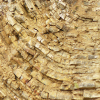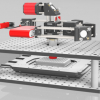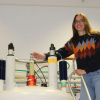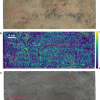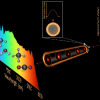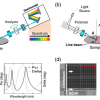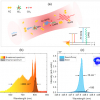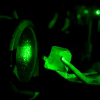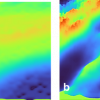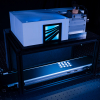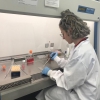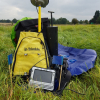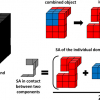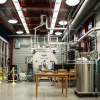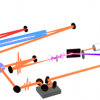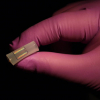Spectroscopy News
Research shows that it is possible to classify rocks according to the size of the particles they contain during quarrying, using a portable Raman spectrometer.
The new Raman spectroscopy methodology has the potential to detect infections in cystic fibrosis patients in minutes and could be expanded to target a variety of diseases and counter anti-microbial resistance.
Polyethylene accounts for nearly one-third of the world’s plastic waste. An interdisciplinary team from the University of Bayreuth has used NMR spectroscopy to investigate the progressive degradation of polyethylene in the environment for the first time.
Terahertz imaging and signal processing techniques to look beneath the corroded surface of a 16th-century lead funerary cross.
Optical solitons often combine into pairs with very short temporal separation. Introducing atomic vibrations in the terahertz range, researchers at the Universities of Bayreuth and Wrocław have solved the puzzle of how these temporal links are formed.
A type of optical fibre with a refractive index that varies continuously across the fibre structure has been shown to yield a dramatic increase in supercontinuum power, while still preserving a smooth beam intensity profile.
Researchers at Samsung developed a novel approach to inspect and measure the critical dimensions of semiconductor devices using hyperspectral imaging, with higher speed and resolution than conventional methods.
Air-lasing-assisted coherent Raman spectroscopy can provide quantitative measurement and simultaneous detection of two greenhouse gases, as well as the identification of CO2 isotopes.
A team from the University of Geneva has succeeded in visualising crystal nucleation with Raman microspectroscopy that was invisible until now.
Computational imaging technologies have substantially reduced the costs of imaging systems and at the same time significantly improved their performances. Use of a Lucy-Richardson-Rosen computational reconstruction method with infrared microspectroscopy has produced 3D images.
The Awards Committee of the Council for Near-Infrared Spectroscopy (CNIRS) is requesting nominations and submissions for four award categories.
Fraunhofer IAF has developed an integrable measurement system which uses machine vision to detect samples and verify them using laser-based infrared spectroscopy.
As an industry partner, HORIBA will co-create, support and mentor a four-year research project to explore how spectroscopy can help drive new methods of cell screening and disease diagnosis based on animal-free research.
Gamma-ray spectrometers, commonly used at nuclear power plants, can be repurposed to help discover ancient buildings or dinosaur bones.
Serial sectioning of pharmaceutical tablets with spectral mapping has enabled full visualisation of the three-dimensional (3D) microstructure of a tablet system to be achieved.
Researchers have developed a more accurate method to discover and document pervasive “forever” chemicals, which have been found in the blood of people and other animals across the globe.
Scientists at the Max Born Institute have managed to generate attosecond pulses at 100 kHz repetition rate. This enables new types of experiments in attosecond science.
IonSense, maker of the DART ionisation technology, has been acquired by Bruker. The deal provides financial investments to ramp up development of the DART technology.
Researchers say the surface enhanced Raman spectroscopy sensor combines accuracy levels approaching that of PCR testing with the speed of rapid antigen tests, and could be used for mass testing at airports, schools and hospitals.
Si-Ware has announced a partnership with NutriControl Analytical Solutions, a laboratory network based in the Netherlands serving the animal feed, dairy and food sectors.

